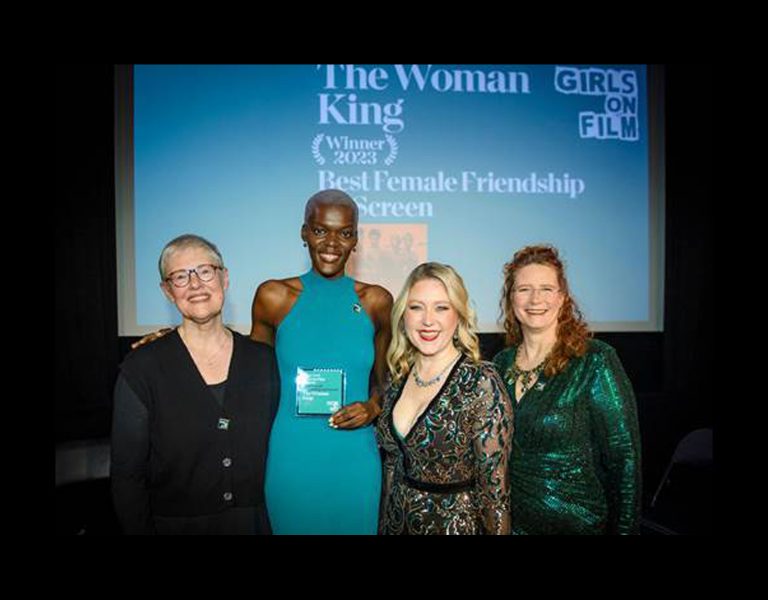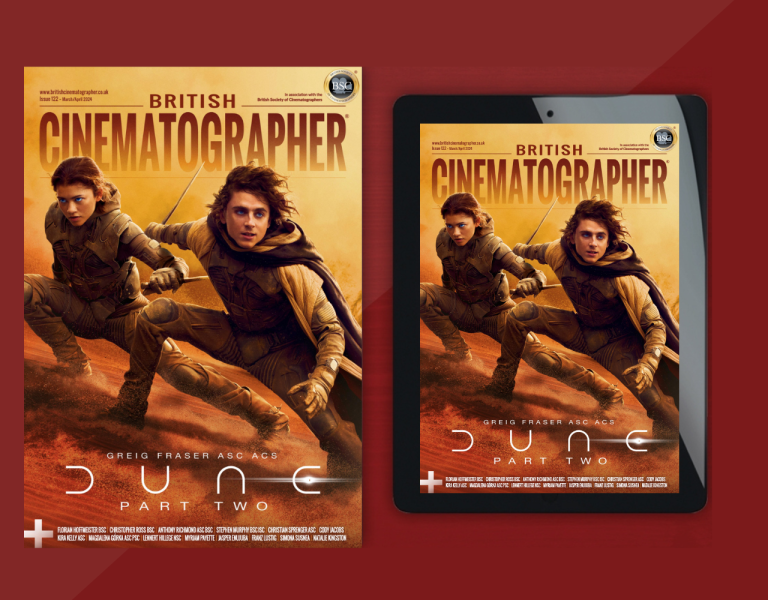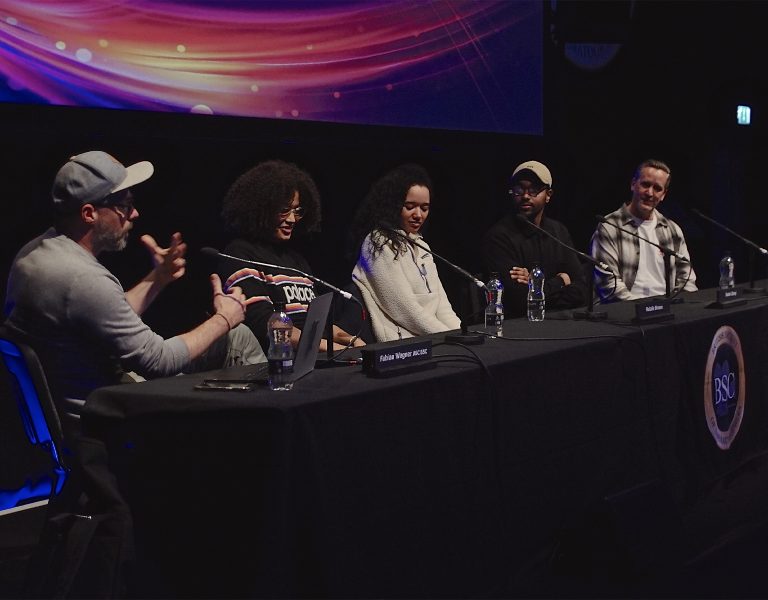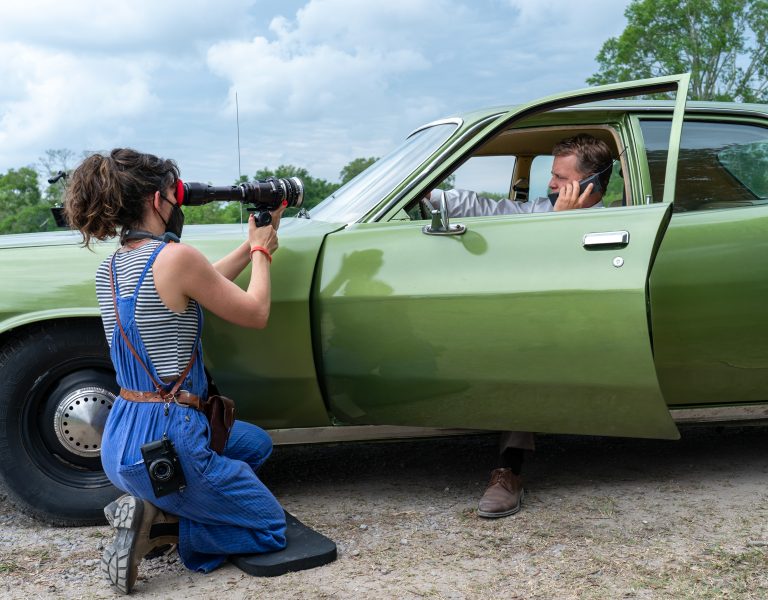In some prayer books, the stretch that comes after the celebrations of Easter is referred to as “ordinary time” – a return to more regular days, after the fervency of carnival, and the spring holidays.
In Hollywood, of course, that fervency generally coincides with Oscar season, and all the connected award shows. And then, somewhere around Thanksgiving, or Advent, or Hanukkah, if it’s early, the handicapping for the next crop of nominees starts in earnest and “ordinary time” is already giving way to the anticipation of the carnivale to come.
And while this may indeed be the post-Oscar stretch (astute readers will realise we are back in “Across the Pond” gear with this outing) it’s definitely not “ordinary”.
And we’re not simply referring to the fact that Emmy handicapping is gearing up, or even the various woes and unravellings in the world at large. After all, even in Hollywood (both the literal and the conceptual one), things have yet to return to “normal”, post-pandemic and post-strike, both in terms of steadily reliable numbers of movie-goers, and in terms of how much work there is – or isn’t – for those who make “shows”, or whatever it is we’re calling the “content” on our large and small screens now.
And to be sure, even using a reductive word like “content” is entirely part of the problem the industry is facing in this digital, bifurcated, infinite platformed, AI-approaching, small byte age of ours.
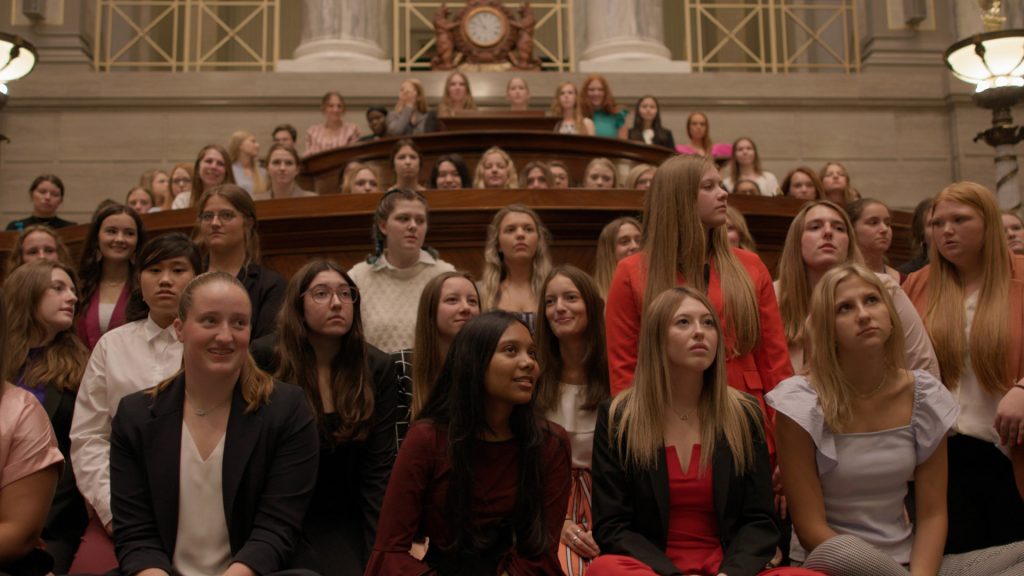
Gender politics
However, when we’re lucky, some of that “content” can still be illuminating. Such is the case with the new documentary on Apple TV+ this week, Girls State, a follow up to their earlier, Emmy-winning Boys State, of a couple years back.
The premise, as the sponsoring American Legion states it, is to gather high school seniors “to learn about the political process by electing officials for all levels of state government and actively running a mock government. The participants are assigned to mock cities and either the ‘Federalist Party’ or ‘Nationalist Party’.” Kind of a US-specific Model UN, then, while also a summer camp – with all the intrigue those usually bring – held on the grounds of a sponsoring campus.
While the Legion’s public service-minded Auxiliary has, to their credit, also run a Girls State programme for decades, the boys and girls tracks are kept distinctly separate. Each US state, except Hawaii, has its own programmes (former President Bill Clinton was one of its alums), and now the filmmakers return, after their original Texas-set story, to follow a girls’ gathering on a college campus in Missouri. Where, for the first time, a Boys State conference is on the same grounds.
The timing also coincided with the run-up to the US Supreme Court’s notorious Dobbs decision, which had at that point already been leaked (and is thus part of the discussion), overturning legal protection for abortion access. So while the young women came from a broad swath of Missouri communities – African-American and Indian-American girls from cities like St. Louis, their more often (though not always) conservative white counterparts from the Red State’s smaller towns – all of them, whether campaigning for the group’s “governorship” – i.e. its presidency – or a seat in the legislature or on its Supreme Court, confront certain lessons that not all politics is created equal. Starting with the fact that none of the girls are allowed anywhere on campus by themselves. Whereas the boys are free to go solo.

Laura Hudock, whose own credits run to docuseries like Woman with Gloria Steinem, The Circus: Inside the Greatest Political Show on Earth, and episodic drama like American Rust, was one of the DPs, and recounts coming on board when “directors Jesse [Moss] and Amanda [McBaine] brought a team of seven cinematographers together to film Girls State. A few of the DPs had previously shot [Boys State]. When Jesse was looking to add another cinematographer to the team he reached out to friend/director Matthew Heineman who I’ve worked with previously and recommended me for the project. Then I interviewed with Jesse and it seemed to be a great fit! Supporting stories that confront women’s rights and encourage women’s empowerment are important to me and joining a talented, Emmy-winning team was a no-brainer.”
The doc – as all documentaries must – seeks to narrow its rather sprawling canvas into a graspable narrative or two, or six, in this case, as Hudock relates that the directors “interviewed hundreds of girls to narrow it down to a cast of six main subjects. Pairing a cinematographer with the right subject is also, in a way, an important casting decision for a documentary director. Each DP was assigned a different subject,” who they then followed, and Hudock drew Emily Worthmore, one of the more self-assured candidates for the group’s governorship.
While describing herself as a conservative, Worthmore generally stayed away from specific issue statements, running a more “up with people!” style campaign, attempting to simply bring everyone together through sheer dint of her personality, except of course, doing this in a world where real, ostensibly “grown up” politicians are busily demonising each other.
“Emily and I just clicked,” Hudock says. “Although I may not agree with her politics I appreciated her as a human being and the respect was mutual.
“The key to great vérité cinematography is trust,” she continues (which of course brings up the question of whether that element is needed in decidedly non-vérité circumstances, like shooting a Hitchcock film, or Citizen Kane. But we digress…) “If your subject trusts you enough to let you into their intimate world, that’s when you can capture truthful and beautiful moments.”
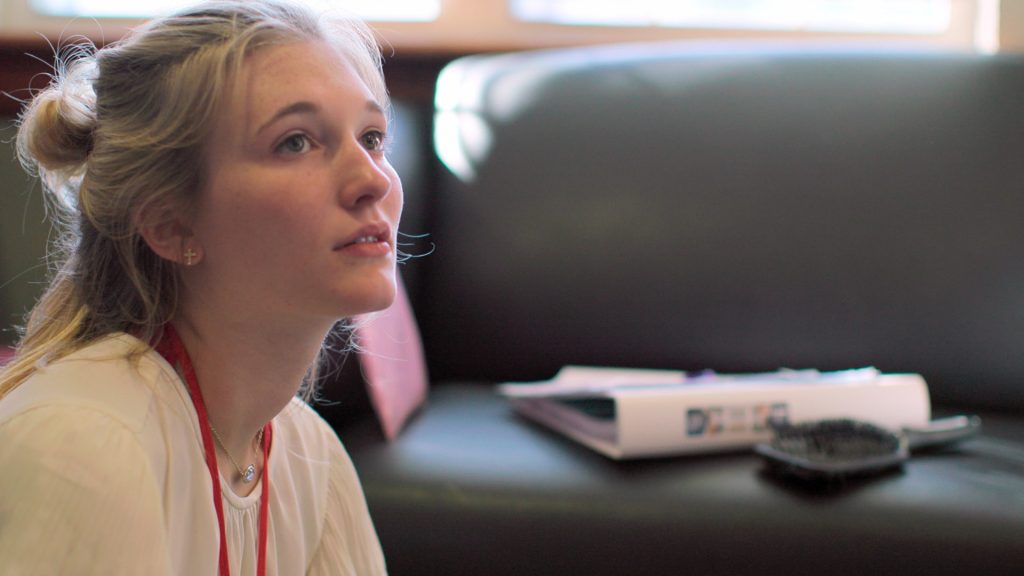
And Worthmore provides some rather galvanising plot-twist moments of her own towards the end, when (mild spoiler alerts here) her campaign doesn’t go as planned, and coming to her “now what?” moment à la Robert Redford in The Candidate (though granted, he asked that after he’d won), she discovers a crusading journalist within, writing an article for the group’s paper asking salient questions such as why Missouri Governor Mike Parson comes only to congratulate the young men in person, while completely ignoring the young women.
As the Romans said, Res Ipsa Loquitur.
“Most of the filming wasn’t planned,” Hudock allows. And of course, when it comes to the twists of “real life”, how could it be? “You just have to react and make choices as a scene unfolds in front of you. The larger scenes in the auditorium with all 500 girls were discussed as a team previously in terms of who was covering what,” but she says that “when you’re filming a vérité scene in the moment you have to think fast and basically edit in your head while you shoot. This has taught me the essentials of what sequence of frames are required to tell a story in a narrative scene. My handheld instincts for a narrative are 1000% sharper because I’ve shot docs. Probably the most important skill gained from documentary filming is the ability to be present and connected to the story unfolding in front of my lens. I feel as if I am another actor in the scene, taking in and responding to the dialogue, emotional life, and beauty, or ugliness, revealed before me.”
Hudock took in, and responded to those moments with a C500 Mark II, which she says is not only “self-contained (and) requires little or no accessories to operate (but also) allows for a small build which is important for most vérité documentary situations. Internal NDs, assignable buttons for quick changes, and light weight body are great aspects to have in a documentary camera.”
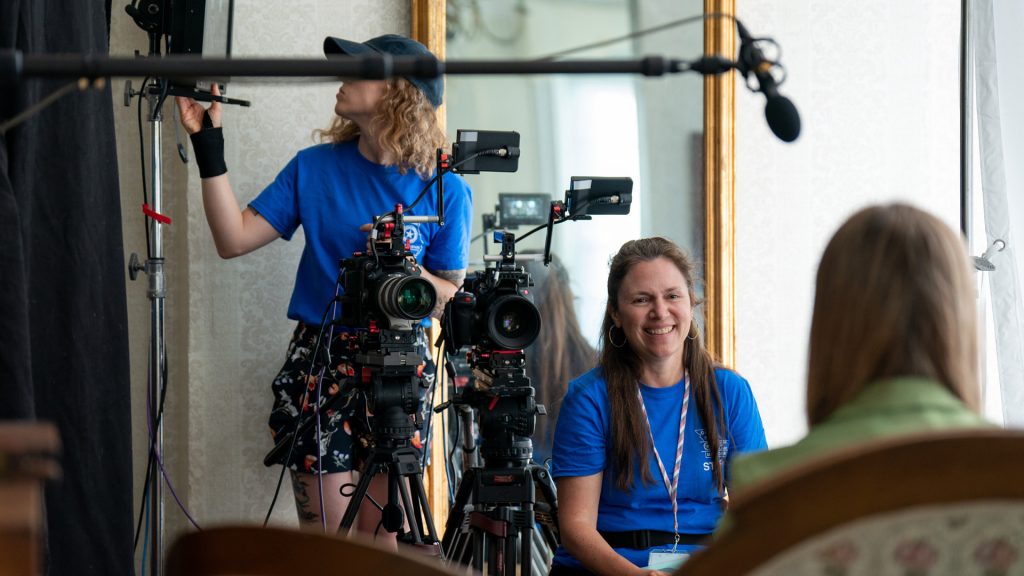
In her work she “usually alternate(s) between Sony, ARRI, and Canon according to the project needs. Mostly I choose Canon for nonstop vérité situations […] Filming Girls State was a marathon of 14-hour days in the heat where you felt like you may just collapse at the end of the day.”
Of the experience, she says “trying to keep it both steady and sharp while running around with a [Canon CN-E] 50mm prime wide open on a full frame camera was honestly not an easy task but worth it. We were intimately submerged in their world, an intimacy which I hope helps the audience connect more with these brilliant girls.”
The connecting part comes fairly easily, as the doc draws you right in – in part, because the girls are not only connecting with each other in ways they hadn’t anticipated, but eventually, with parts of themselves. Especially as even those with the most faith in the institutions around them come to realize that it’s still easier to negotiate those particular pathways if you’re over in Boys State, a few dorm buildings away.

Sharing skills
Also connecting with students, though in this case, teaching them about how to wield cameras of their own, is Amy Vincent ASC. We mentioned last column out that we’d done a longer interview with her around the time of the ASC awards, where she was honoured with the President’s Award, for not only being an active member of the society’s Board of Governors and founding member of the Society’s Vision Committee, but also “an influential pioneer and champion for women in the film industry (who) actively participates in mentorship programmes, while also teaching cinematography at universities, including the American Film Institute, Florida State University, and Loyola Marymount University where she is currently the Distinguished Artist in Residence.”
At Loyola, or LMU, located on the western edge of Los Angeles, where surviving wetlands are holding out against housing developments and tech company hubs, she helps students “as they are about to graduate” into a world both increasingly unpredictable in general, but also in terms of the specific career paths they may have imagined for themselves in film and TV production, as they strive to “get off the bluff”, in the words of the dean who helped Vincent design the residency so she could “come and go with some freedom” to pursue her own work, which boasts such credits as Eve’s Bayou, Black Snake Moan, and Hustle & Flow.

That work also includes the current A Nice Indian Boy, a kind of reverse Guess Who’s Coming to Dinner? with a South Asian twist, as the parents of lead character Naveen, played by Karan Soni, must adjust to the fact their son’s intended is not only white – but another fella.
The indie feature was directed by Roshan Sethi, who Vincent met at Disney+ when they “were putting together a kids movie that he was directing”. Ultimately, “they wanted someone with more music video credits,” but she and Sethi “really hit it off in that meeting”, and about a year later, the script for Nice Indian Boy arrived, eventually rekindling what Vincent describes as “the family joy” of a tight knit indie shoot.
And although she describes the director and herself as “a little bit of an odd couple – we have a 32-year age difference,” one of the areas where they align is in having simultaneous multiple careers, something that Vincent considers will become more common in an increasingly complex world. “He’s a doctor, I’m a teacher,” she says.

An oncology doctor, no less. As for Vincent, though, there’s no reason those “dual careers,” as she describes them, can’t inform each other. Of her campus mentoring. she says she finds an almost “illegal level of passion” in her students, something they can bring with them to a world where Vincent finds that she “really love(s) when people can do more than thing.”
She adds that not only does having “young people around… keep me on my game,” but she’s also been able to “access a lot of memories” from earlier in her own career path. All of which led to the current “confluence of energies”, as she describes it, recently topped off with the ASC honour.
Meanwhile, the energies here across the pond are increasingly heating up, as we head toward summer blooms and box office, along with the aforementioned Emmy forecasting.
We’ll see you back here when June starts busting out all over.
@TricksterInk / acrossthepondBC@gmail.com

